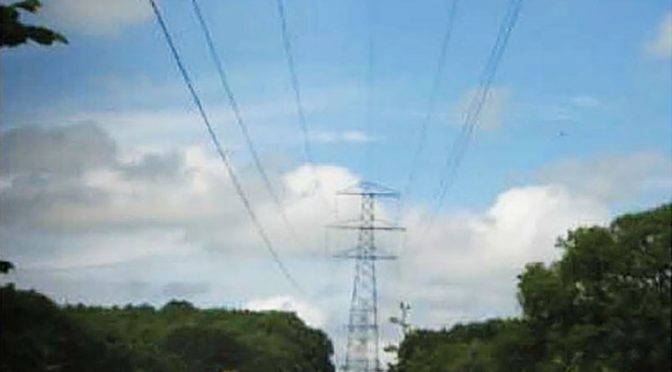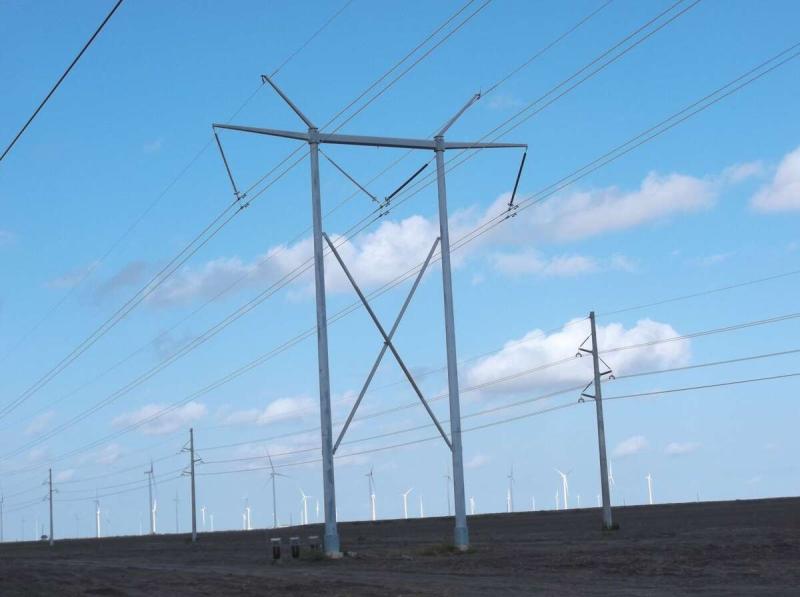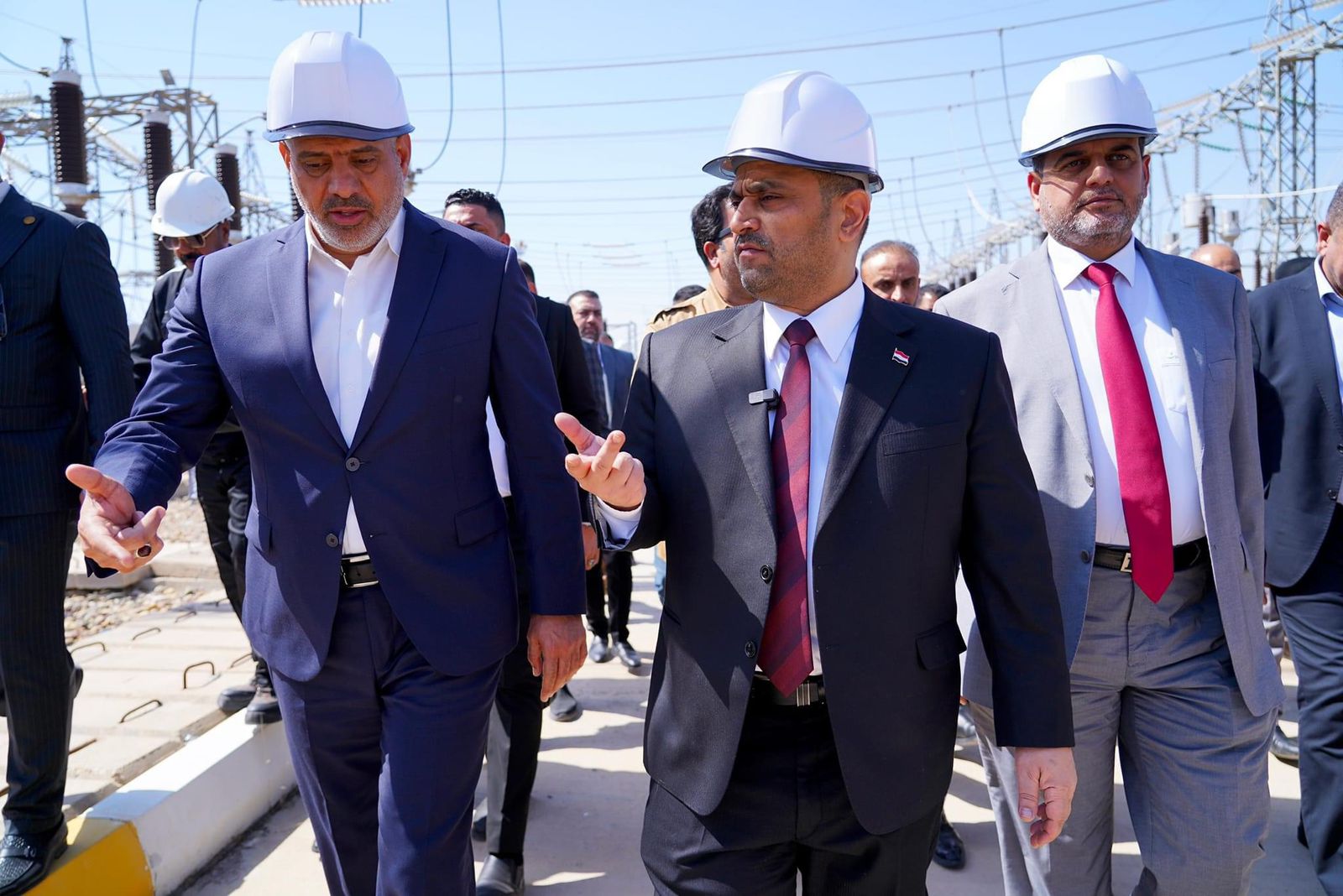Technology is improving the electric power grid
For over one-hundred years, electricity has been delivered to consumers using bare overhead conductors that were made up of conductive aluminum strands wrapped around a core that consisted of steel wires. The steel wires were used to augment the strength of the conductive aluminum strands, which, in their most corrosive-resistant alloy, offered reasonable conductivity and modest tensile strength. The added strength provided by the steel core enabled utilities to reduce the number of towers or poles required as they built new transmission lines.
As demand for electricity grew and new sources of generation were brought on line, many transmission and distribution lines became thermally constrained. This is due to the fact that, as electrical current increases, the temperature of the conductor rises. The increase in conductor temperature is a function of the electrical resistance of the materials utilized. Unfortunately, as aluminum wires are heated above ~95°C, they begin to anneal which causes a substantial loss of strength.
Of greater concern is the relatively high coefficient of thermal expansion (“CTE”) of the steel core and aluminum strands, that allow the conductor to sag as its temperature rises. Clearance limitations can prevent a line from safely carrying additional load, especially under emergency conditions, which can compromise grid reliability. A sag and temperature comparison of various conductor types is shown in Figure 1. In this case, 1,600 amps were run through each conductor type on a 70 meter test span. Note the cooler operating temperature of the ACCC (Aluminum Conductor Composite Core) under equal load, due its lower electrical resistance (improved efficiency).
Upgrading existing transmission corridors without structural modifications
Recognizing the challenge of increasing transmission line capacity, mitigating thermal sag, and improving conductor efficiency, CTC Global, of Irvine, California, USA, began developing the patented ACCC conductor in 2002. The objective was to develop a conductor that could be used to upgrade existing transmission corridors without structural modifications. This objective relied on the incorporation of highly evolved aerospace technology and materials science to create a new higher-strength, lighter-weight core that could incorporate additional conductive aluminum without a weight or diameter penalty, and be utilized to reduce thermal sag, increase spans between fewer structures, carry more current, and reduce line losses.
As the project evolved, CTC Global developed a hybrid carbon and glass fiber core that resisted degradation from UV, chemical, thermal, and cyclic load fatigue that had previously plagued non-ceramic “polymer” insulators (NCI’s). With a clear understanding of how to mitigate these and other environmental challenges, CTC Global began developing ISO certified manufacturing techniques and tooling to allow the cost-effective and continuous production of a pultruded composite core that utilized carbon and boron-free glass fibers embedded in a high grade thermoset resin. Very high grades of carbon fiber, glass fiber, and resin materials were selected and employed to provide high strength, low thermal expansion, and good compatibility. The glass fibers that surround the ACCC conductor’s carbon fiber core were designed to increase the core’s flexibility and prevent galvanic corrosion that would otherwise occur if the carbon core came in direct (and substantial) physical contact with the aluminum strands in the presence of an electrolyte such as salt water.
While the carbon and glass fibers provide the composite core’s high tensile strength, the hybrid resin system helps improve the composite core’s flexural strength and effectively balances load sharing between the fibers, so they perform in a ‘unified,’ composite manner.
Recognizing that higher electrical current can also result in higher operating temperatures, CTC Global developed and tested resin systems that would resist thermal fatigue. The systems that were ultimately commercialized in 2005 – after substantial testing – have proven their ability to perform continuously at temperatures of up to 180°C without experiencing thermal oxidation. Higher ‘emergency’ temperatures can be easily tolerated for relatively short periods of time.
While CTC Global’s initial goal of increasing line capacity without exceeding sag limitations was readily achieved, other advantages also became apparent. As with Boeing, Airbus, NASA and other manufacturers who are relying on carbon hybrid composites to increasingly greater extents – not only for their improved strength to weight characteristics and corrosion resistance, but especially for their resistance to cyclic load fatigue – CTC Global’s ACCC conductor raised the conductor longevity bar substantially. Resistance to cyclic load fatigue is critical with bare overhead conductors, because everything is cyclic including vibration, tension, and temperature variation.
ACCC conductor enables longer spans on new transmission corridors
While the ACCC conductor’s greater strength and improved thermal stability can enable longer spans between fewer and/or shorter structures on new transmission corridors – which serves to reduce capital costs – the ACCC conductor is also ideally suited for re-conductoring projects, because it is capable of carrying approximately twice the current of a conventional ACSR conductor without exhibiting excessive thermal sag.
In either case, tremendous up front capital cost savings can be realized. Additionally, because the composite core is much lighter than its steel counterpart, the ACCC conductor utilizes 25 to 30% more aluminum (using compact trapezoidal shaped strands) without a diameter or weight penalty (Figure 2). Not only does the added aluminum content help improve electrical throughput, it also serves to reduce line losses by 25 to 40% compared to any other conductor type of the same diameter and weight, under equal load conditions.
Figure 2 – Comparison of ACSR & ACCC Conductors
Reduced line losses offers huge advantages
Not only can fuel consumption be reduced, which has obvious economic benefits, the reduction of fuel consumption can also dramatically reduce greenhouse gas and other emissions. In the case of a renewable resource, where emissions are not a concern, the utility can deliver more power for the same initial capital investment, which can make the economics of a renewable project much more attractive, or conversely, reduce their initial investment and deliver the same amount of power.
Considering that the reduction of greenhouse gas and other emissions represents such a significant challenge for the utilities today, re-conductoring an existing line with ACCC conductor is by far the cheapest and fastest way to achieve that objective, especially considering that it doesn’t require special permitting or regulatory approval that can drain resources and delay progress.
While conserving fuel and reducing emissions has obvious economic, social, and political advantages, saving energy can also help the utilities and their customers conserve money that they would otherwise spend in developing new sources of generation. A Mega-Watt saved is a lot less expensive than a Mega-Watt produced. So profound is this fact that many utilities and regulators are now referring to a saved “Mega-Watt” as a “Nega-Watt.”
While reducing line losses by 25 to 40% or more is easily accomplished by re-conductoring an existing corridor with the ACCC conductor, it’s noteworthy that re-conductoring a single line can also improve overall system efficiency by reducing stress on other parts of the system. In 2007 American Electric Power (AEP) reported that by simply reconductoring an existing 20 km line with ACCC conductor, they reduced losses by .9 MW and also reduced overall system losses by an additional .2 MW, for a total improvement of 1.1 MW.
To date, American Electric Power has completed well over a dozen ACCC conductor installations in its service territory. Worldwide, over 60,000 km of ACCC conductor has been installed at more than 575 project sites in ~ 50 countries by more than 175 utilities and commercial customers.







